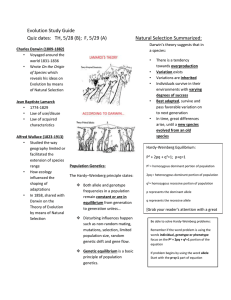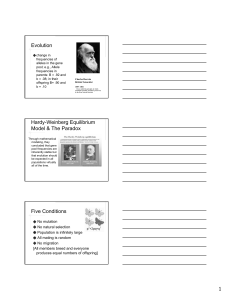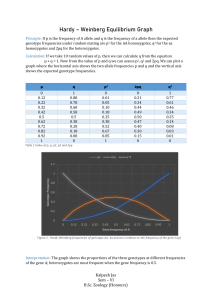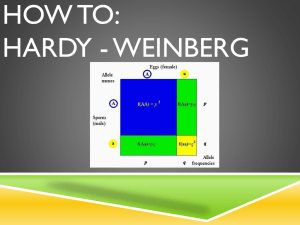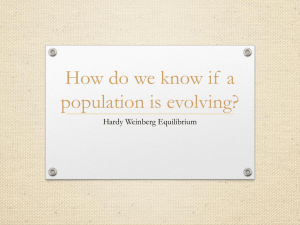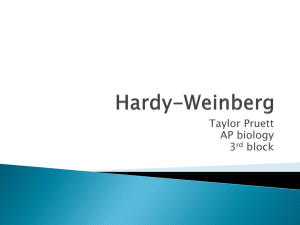Solutions - biology4friends
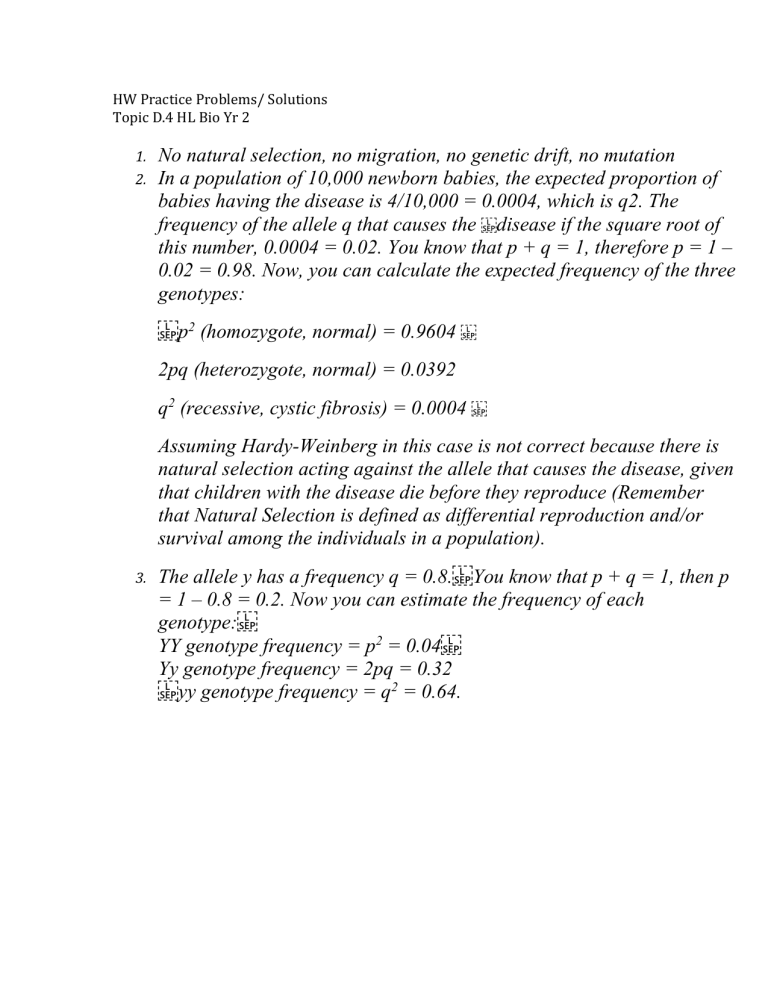
HW Practice Problems/ Solutions
Topic D.4 HL Bio Yr 2
1.
2.
No natural selection, no migration, no genetic drift, no mutation
In a population of 10,000 newborn babies, the expected proportion of babies having the disease is 4/10,000 = 0.0004, which is q2. The frequency of the allele q that causes the
disease if the square root of this number, 0.0004 = 0.02. You know that p + q = 1, therefore p = 1 –
0.02 = 0.98. Now, you can calculate the expected frequency of the three genotypes:
p 2 (homozygote, normal) = 0.9604
2pq (heterozygote, normal) = 0.0392 q 2 (recessive, cystic fibrosis) = 0.0004
Assuming Hardy-Weinberg in this case is not correct because there is natural selection acting against the allele that causes the disease, given that children with the disease die before they reproduce (Remember that Natural Selection is defined as differential reproduction and/or survival among the individuals in a population).
3.
The allele y has a frequency q = 0.8. You know that p + q = 1, then p
= 1 – 0.8 = 0.2. Now you can estimate the frequency of each genotype:
YY genotype frequency = p 2 = 0.04
Yy genotype frequency = 2pq = 0.32
yy genotype frequency = q 2 = 0.64.
4.
(a) There are 336 + 64 = 400 animals in the population. 64 are homozygous recessive (brown)
Frequency of homozygous recessive = q 2 = 64/400 = 0.16
(b) Since q 2 = 0.16, take the square root to get q = 0.4 Remember that p
+ q = 1 (formula for allele frequencies) Frequency of the dominant allele p = 0.6
(c) Frequency of heterozygote genotypes = 2pq = (2)*(0.6)*(0.4) =
0.48
Multiply the frequency by the total population size to get the number of animals: (0.48)*(400) = 192
(d) If the population is still in H-W equilibrium, then the allele frequencies would be the same: p = 0.6, q = 0.4
The tan phenotype is produced by 2 genotypes, homozygous dominant and heterozygous Frequency of these genotypes is p 2 and 2pq p 2 = (0.6)2 = 0.36 and 2pq = (2)*(0.6)*(0.4) = 0.48
Multiply each of these frequencies by the total population size
(0.36)*(650) = 234, and (0.48)*(650) = 312. Then, 234 + 312 = 546 tan
(e) We calculated this in the previous problem: p 2 = (0.6)2 = 0.36, and then we multiply the genotypic frequency by the total population:
(0.36)*(650) = 234
